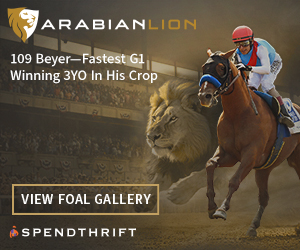
Last year, the pandemic forced horse race tracks to rethink the status quo. But it wasn’t all bad: Pioneers who tried new production and distribution methods are now well-placed to raise their brand equity and stake their claim in an expanding wagering landscape.
Maintaining revenue streams under complicated circumstances was challenging, but horse race tracks adapted to new models smoothly — and with greater success than major league sports — and proved the viability of new business and production models.
The practical difficulties of producing race coverage under social distancing protocols forced tracks to get out of their comfort zone and try new things. Race tracks turned to remote video production workflows to broadcast live events with limited on-site crew and equipment. On the distribution side, horse racing media companies picked up new coverage on major networks such as Fox and NBC, giving the industry exposure to more viewers and a larger wagering audience.
These changing production and distribution models will help industry early adopters accelerate growth in online betting and cut into the broader sports betting market.
Going remote
Remote production doesn’t just solve logistical headaches. It creates a model for creating content with higher production qualities. For instance, LTN uses full-time production experts in our 30,000-foot facility to manage production from graphics to mixing. They’re all long-time sports production pros using the best tools, and they bring a lot of ideas from other sports.
Race tracks were quick to pivot to this model, leveraging remote teams and centralized facilities with first-class technology to align with on-site crew limitations. With fewer requirements for on-premise hardware and a reduction in staff travel costs, remote productions are approximately 20% less expensive than traditional productions where the whole crew works on-site.
Getting broadcast feeds from the race tracks to an off-site facility requires ultra-reliable connectivity. IP-based transport and managed transmission networks are critical to overcoming internet infrastructure limitations, providing the backbone that enables smooth delivery of live broadcast-quality video to all destinations.
Production technology is expanding horizons and helping capture new audiences
As the racing industry begins to welcome crowds back to the tracks, on-track betting will come as a major revenue boost for the sport. But in the face of adversity and empty race tracks, the industry showed an appetite for innovation and a shift in focus to online betting. The momentum gained over the past year can lay the groundwork to attract greater TV viewing audiences and capture some of the online gambling spend — forecast to surpass $160 billion by 2026.
Live sports has always been a hub for innovation in broadcasting. Fans now demand high production values and a first-class viewing experience — particularly wagering audiences. However, many race tracks still rely on standard definition video, which translates to a poor viewing experience and less interest from the cable networks that can help tracks deepen fan engagement and connect with new audiences. To compete for viewership and wagering revenue with other sports and enhance its profile with betting platforms, the horse racing industry needs to strive for a transition to high definition and later to 4K–quality broadcasting.
Horse racing faces another hurdle: The sport traditionally follows a model of closed network distribution, limiting its distribution across emerging markets. Many in the industry don’t realize they can use IP-based workflows to replace closed distribution models and scale across multiple platforms and destinations. The transition to IP opens the door to new digital audiences and enhanced advertising capabilities, driving new revenue opportunities. Free networks like Roku and Pluto TV represent a great opportunity for race tracks to expand distribution and reach new viewers.
Horse racing can win big on TV audience expansion — if race tracks improve integration with online wagering platforms and national broadcasters, racing will gain far greater exposure among betting audiences. And horse racing has a secret advantage: it lends itself well to sports betting. The short race times are compelling to sports betters, who can wager an average of 15 races in the time it takes most sporting events to be won or lost.
Betting on success
Horse racing learned some eye-opening lessons over the past year. Technology enabled tracks to maintain production while accelerating change in an industry in need of digital transformation. IP infrastructure, enhanced production values, and a rethink of the distribution model will be critical to ensuring horse tracks aren’t left behind in a rapidly evolving betting landscape.
Crucially, horse racing is in prime position to build upon the momentum gained during the past year — with the right toolkit and future-thinking distribution strategy, the industry can stake its claim to new audiences, greater revenues, and a bright future.
Feature by: Richard Rosa, VP Business Development, Wagering & Simulcasting at LTN Global
Photo: Richard Rosa, (LTN Global)



